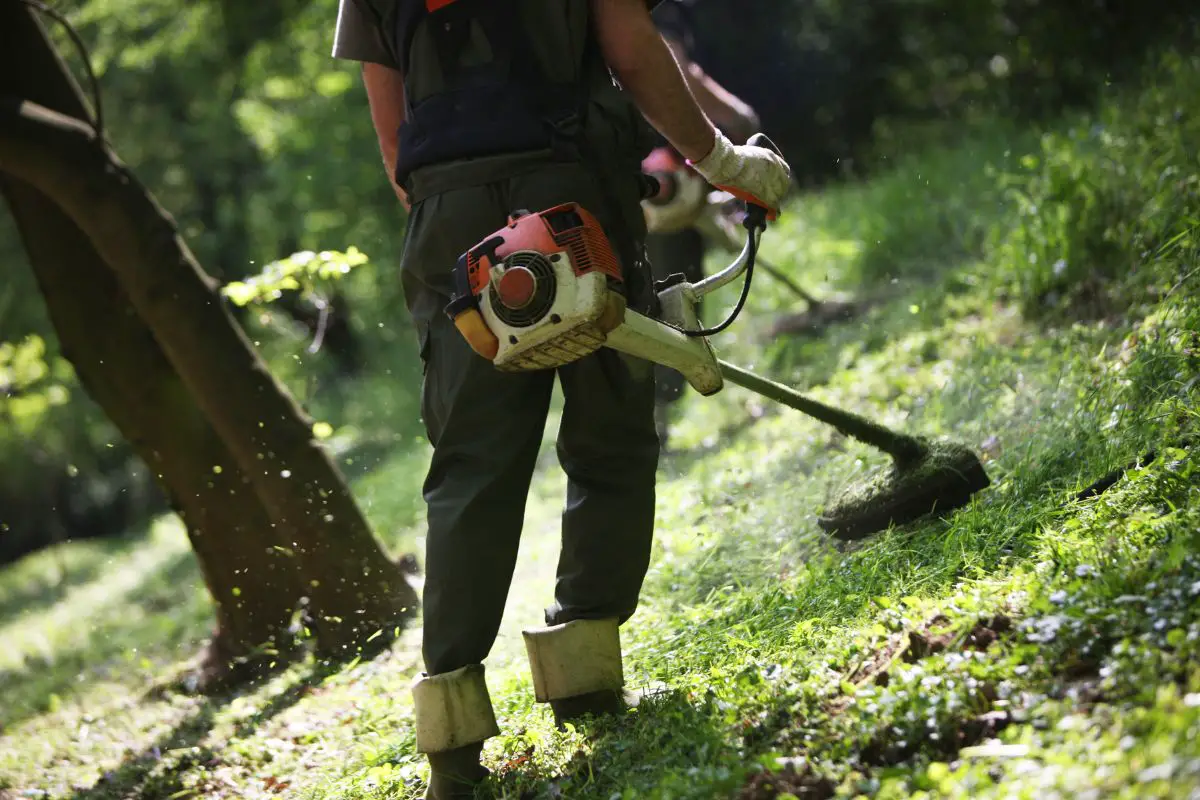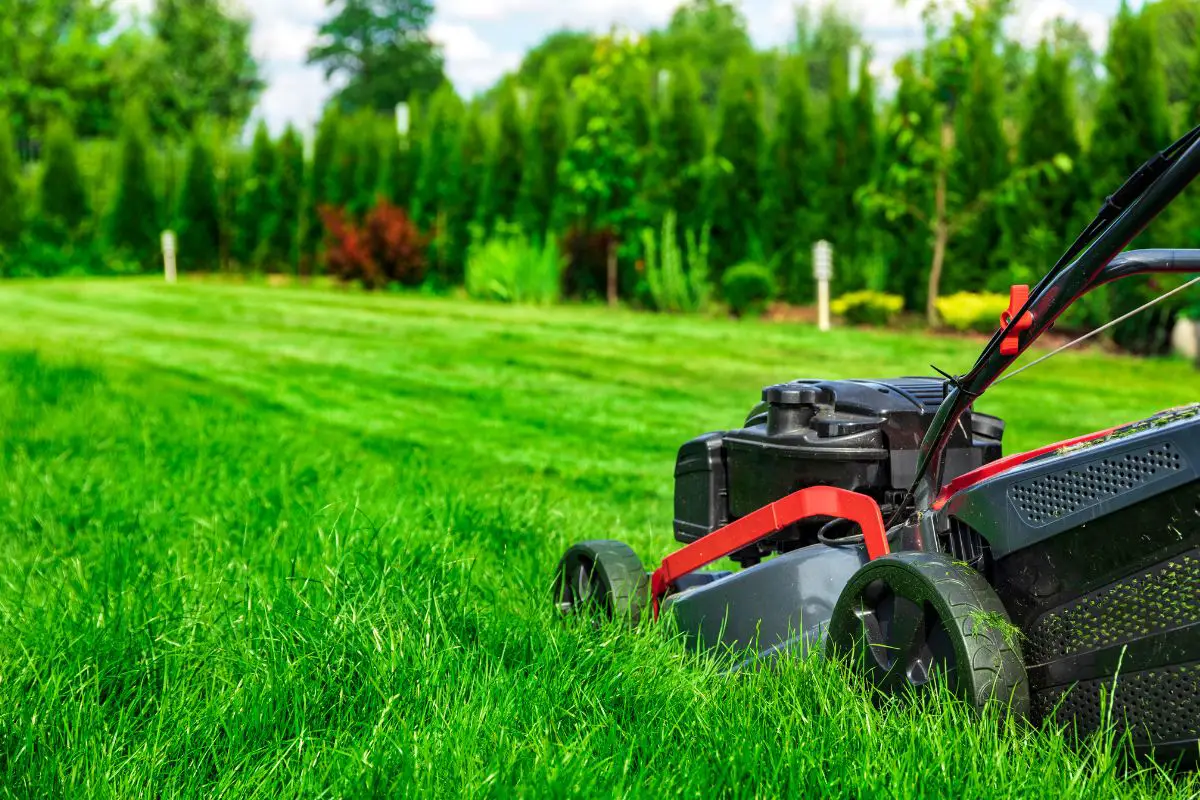Taking care of your lawn is one of the easiest and quickest ways to make your whole garden look put together and healthy. There is nothing worse than looking out of your window and seeing patchy, yellowing grass.
Thankfully, it is incredibly easy to remedy patchy grass through the process of overseeding your lawn.
While the process of overseeding is simple in and of itself, the aftercare required can be a little more demanding. There are a few steps that need to be taken during the period of growth following the application of overseeding.
These steps need to be spread out correctly to help protect the new grass plants that are growing.
One of the most crucial steps is the first mow after the seeds have been sown. In this article, we will look at whether you can mow your lawn after overseeding.
Can You Mow After Overseeding?
The short answer to this question is, yes, you can. However, it is important to make sure that you are not mowing your grass too soon after overseeding.
To make things more complicated, you also shouldn’t wait too long to mow your overseeded lawn.
When Is It Best To Mow After Overseeding?
The ideal time to mow your lawn after overseeding is between 2 – 4 weeks after applying the seed for the overseeding process.
If you are unsure whether your grass plants are ready to be mown, a useful guide to follow is to make sure that the blades of new grass are at least 2.5 to 4 inches tall.
At this length, the grass will be strong enough to withstand mowing without compromising the roots.
If you attempt to mow your lawn before the grass blades are strong or established enough, you run the risk of the roots not getting enough of the nutrients they need to survive. This will result in the new grass plants wilting and dying.
If you hold off on mowing your new grass plants for too long, they can become overgrown. This can lead to the ground becoming waterlogged due to poor drainage.
This in turn can affect how the grass grows and the overall health of the new grass.
How To Safely Mow Your Lawn After Overseeding
There are a few important steps that should be taken to ensure that you properly and safely mow your lawn after overseeding to protect the new grass that you have sown.
Set Correct Blade height
One of the most important things to do when mowing your lawn for the first time after overseeding is to set the blades to the correct height.
It is important to make sure that you aren’t cutting the new glass leaves too short as this can have a significant impact on the health of the plants.
The ideal height for cutting newly seeded grass is around 2.5 – 3 inches. This ensures that not too much of the leaf is cut and encourages healthy growth of the plant.
If you are unsure about the height of your mower blades, the safest option is to choose the highest possible blade setting. It is better to cut too high than to cut the blades too short.

Ensure Turf Is Dry
Even with established grass, you should try to avoid mowing a lawn when the grass is wet. However, this is especially important when you are mowing overseeded grass for the first time.
When grass is wet, it is more prone to damage from the blades. It is also more likely to become compacted or be uprooted by the blades.
Another important thing to note about mowing wet grass that has been overseeded is that fungal infections are more likely to thrive in damp conditions.
If you mow your lawn when it is wet, you are more likely to be spreading any fungal spores around your lawn. This can be particularly dangerous for new grass plants that are already vulnerable to fungal infections.
For these reasons, you should make sure that the grass is completely dry before mowing it for the first time.
Ensure Blades Are Sharp
Before mowing your overseeded lawn for the first time, it is important to make sure that the blades on your lawnmower are sharp. This will help to ensure that the blades of grass are cut cleanly and with as little damage as possible.
Mowing grass with dull blades can cause significant damage to the plants and can be traumatic for new plants that result from overseeding.
It is always important to maintain your lawn mower by ensuring that the blades are kept sharp so that they can cut the blades of grass easily.
Use Grass Clippings As Mulch
Once you mow your grass on the highest blade setting, you should use the grass clippings as a fertilizing mulch for the new grass.
While this may not provide the prettiest aesthetics straight away, it will help the overall health and nourishment of your lawn in the long run. This can give your lawn a significant boost overall.
How To Care For Your Lawn After Overseeding
Once you have completed the overseeding process, including the first cut of the lawn, it is important to make sure that you continue caring for your lawn appropriately.
One of the most important things to do to ensure that your lawn remains healthy and luscious is to establish a proper mowing routine.
This includes mowing your lawn at the correct frequency to keep the plants healthy. It also involves making sure that you aren’t cutting your grass when it is wet, and that you are not using dull blades that can cause trauma to the plants.
Final Thoughts
Overseeding your lawn is a great way to bring your lawn back to life and restore it to its former glory. However, one of the most crucial steps is timing the first cut right.
This step can make or break your overseeding process. Follow these steps to ensure that your grass ends up luscious and healthy.


